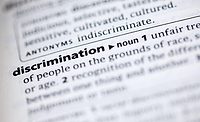The Post-Pandemic Workplace

Knowing what may be around the corner when it comes to COVID-19-related work issues may help save employers some difficulties in the long run.
The reopening of America’s workplaces is creating a variety of challenges for employees and employers alike. In some cases, employers attempting to resume operations are hampered, and in some instances are able to do so due to laid off employees’ reluctance or refusal to return to work.
Many are receiving more in unemployment benefits as the result of the $600 per week federal enhancement than they would make working.
That additional amount was scheduled to end on July 31. Despite the recent comments by some in Washington that it will not be extended, the staggering numbers of unemployed, many of whom worked at jobs that have been eliminated due to business closures, will require a continuation of enhanced benefits. For some, the short-term additional benefits outweigh returning to a job they fear may be lost in the near future anyway.
Even if they are able to reopen, employers are immediately confronted with the reality of the need to implement and consistently enforce, for at least some period into the future, the safety protocols against coronavirus recommended by the CDC, OSHA, and the various state and local public health agencies. These well-known protocols include the social distancing that has become commonplace, hand-washing stations, the use of face masks in some cases, regular monitoring of employees for COVID-19 symptoms, and also where feasible, the reconfiguration of work stations to protect employees from possible exposure to the virus. Some employers are also requiring employee testing for COVID-19 before permitting employees to enter the workplace.
COVID-19 Lawsuits
OSHA has received over 5,000 complaints related to worker safety involving possible coronavirus exposure. More than 2,000 lawsuits raising claims regarding coronavirus have also been filed in courts across the country. Some of these lawsuits accuse employers of not providing adequate personal protective equipment to their employees. Others involve claims that the employer has endangered employees by permitting persons into the workplace without testing for COVID-19.
Many involve claims of an employer’s failure to adequately enforce social distancing or related safety protocols. In those workplaces where jobs have been permanently eliminated, the potential for claims of discrimination based upon a legally protected status such as gender, race, age, or disability could also be filed.
Workers’ Compensation Lawsuits
Another issue that is already confronting many employers is the increase of workers’ compensation claims related to coronavirus. As all employers are aware, it generally covers any injury or illness “arising out of and occurring in the course of their employment.” The complicating factor in COVID-19-related claims is that workers’ compensation does not apply to the “ordinary diseases of life.” Proving that the disease was contracted in the workplace may be difficult. The well-known community spread of COVID-19 may cause state workers’ compensation commissions to find that the illness is not work-related. Employers and their insurers have a viable argument for arguing against such claims.
In order to avoid the automatic denials of these types of claims, at least nine states, including Arkansas, California, Florida, Kentucky, Minnesota, New Hampshire, North Dakota, Utah and Washington, have issued executive orders that, for the duration of the pandemic, create a rebuttable presumption that workers became infected on the job if they have worked during that period. It is likely that more states will take similar action.
Workplace Impact Due to COVID-19
In an effort to maintain some level of business continuity, many workplaces instituted operational changes that impacted employees. In some workplaces, where feasible, employees are permitted to work remotely. Some employers made job consolidations to work with reduced staff, many made work schedule changes and similar restructuring of normal operations. Where such changes were viewed as positive by employees, there will be pressure to continue the changed procedures after the resumption of operations. For example, recent estimates indicate that approximately 30% of people who have been working from home want to continue to do so. Absent evidence that such remote work created operational difficulties, it may be difficult for an employer to end the practice without significant employee push back.
Similarly, the ability to successfully operate leaner during the pandemic will cause employers to want to make any job consolidations and eliminations the new normal. The temporary layoffs will become permanent. This could in some cases precipitate the types of discrimination claims previously mentioned.
Unionization and the Coronavirus
If there are miscues in maintaining the COVID-19 protocols that are perceived as causing an increase in positive cases, employees may view the employer as not sufficiently protecting their health and safety. Such employer frustrations could create a fertile field for union organizing. It is quite apparent that unions see the disorder in many workplaces caused by the pandemic as a unique opportunity to ramp up organizing efforts.
The post-pandemic workplace will be rife with obstacles that could overwhelm some employers. Knowing what may be around the corner and taking steps to avoid it may help employers successfully acclimate to the new environment.
Looking for a reprint of this article?
From high-res PDFs to custom plaques, order your copy today!






.jpg?height=200&t=1638216094&width=200)